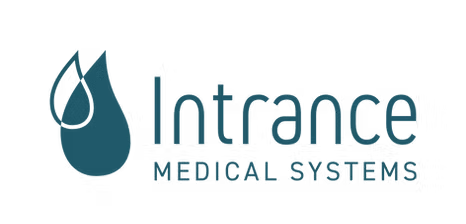Navigating new frontiers: Bringing Parkinson’s treatments to new markets
on LinkedIn:
Advances in drug delivery and strategies to overcome regulatory challenges for global patient access
Patients with Advanced Parkinson’s Disease (APD) face significant challenges in managing their symptoms and maintaining their quality of life. Effective, continuous dopaminergic stimulation treatment options are critical, as conventional oral therapies no longer offer adequate relief with advancing disease state. Advanced device-aided therapies that provide consistent symptom control are essential for improving patient outcomes and enabling a more independent lifestyle.
However, bringing these innovative treatments to market is challenging. Adequate control of APD via continuous treatment can require a combination of drug products, delivered with an infusion pump that is flexible enough to meet the needs of different patient groups yet simple enough for home use.
When deciding on a pump solution, companies must choose whether to adapt existing technologies or develop new solutions from scratch; each path requiring different developmental strategies and involving differing levels of investment and risk. They must then navigate an often-changing regulatory landscape with distinct requirements across regions, adding complexity to the development and approval process.
This article, authored by Steve Augustyn, Deputy Head of Drug Delivery at Cambridge Design Partnership, featuring insights from Krai Chatamra, Vice President of Clinical Development at Intrance Medical Systems Inc (Intrance), explores the necessity of advanced therapies that provide consistent symptom control to improve patient outcomes and enable a more independent lifestyle.
Krai Chatamra has decades of experience in the pathology and treatment of APD. In this article, Steve Augustyn spoke to Krai about the process of bringing a new treatment for APD to the market.
To clarify some of the terminology used in this article;
- a drug substance is the active pharmaceutical ingredient
- a drug product is the final dosage form that includes the drug substance
- a combination product (in this instance) is the drug product working with the specified infusion pump.

Intrance Medical Systems, Inc. is developing a next-generation therapy for patients with APD. The lead product combines a proprietary gel formulation of carbidopa, levodopa and entacapone delivered by an ambulatory infusion pump. The pump delivers the medication directly to the jejunum via a percutaneous endoscopic gastrostomy (PEG) tube, enabling continuous treatment for patients with APD, removing the burden of managing complex oral dosing regimens and preventing the complications associated with the unpredictable motor fluctuations.
Cambridge Design Partnership (CDP) recently supported Intrance in the verification of its selected infusion device, clearing the way for a Phase III clinical trial as part of the company’s marketing application for the US. The verification required hundreds of delivery profile tests to meet the latest requirements in AAMI TIR 101:2021 (Fluid delivery performance testing for infusion pumps) to demonstrate the safety and accuracy of Intrance’s combination product.
Challenges and innovations in APD therapies
Complexity of APD
Krai: Parkinson’s Disease is a vast field. Currently, we are concentrating on the advanced stage of the disease, which is uniquely complex. As the disease progresses, it becomes increasingly multifaceted. Conventional oral therapies are ineffective at this advanced stage.
In APD, patients experience motor fluctuations between two highly disabling states: OFF, where they are unable to move, and hyperkinetic [dyskinetic], where they move uncontrollably. Patients typically spend at least 50% of their waking hours oscillating between these two states. Our goal is to thread the plasma level of L-dopa into the narrow therapeutic window, thereby avoiding patients experiencing such disabling OFF and dyskinetic states.
The challenge of maintaining levodopa levels
Krai: The plasma level of levodopa must be maintained within this very narrow therapeutic window, which continues to narrow as the disease progresses. Therefore, we need a drug delivery system that can precisely regulate the plasma levodopa levels within this narrow synaptic window. This is our biggest challenge.
Our current product, Lecigon, is an investigational drug in the US. However, it has already been approved in multiple European countries. So, the challenges we face are distinct from those encountered by other companies developing drugs or devices for different stages of PD.

“We need a drug delivery system that can precisely regulate plasma levodopa levels within a narrow synaptic window.”
Krai Chatamra | Vice President of Clinical Development at Intrance Medical
Identifying a suitable device platform
Multifaceted challenges
Krai: The challenges are multifaceted. Firstly, there is a constantly changing regulatory landscape. Secondly, each regional governance has its own requirements, which are not necessarily aligned. Lastly, we had to weigh the availability of existing pumps versus the invention of a completely new device, both of which require different developmental pathways. Before deciding on the final infusion device, we had to go through numerous qualifying steps in great detail.
We initially targeted the European market. We are now moving to the US, and ultimately Japan.
“There is a constantly changing regulatory landscape, and each regional governance has its own requirements, which are not necessarily aligned.”
Krai Chatamra | Vice President of Clinical Development at Intrance Medical
Differences in verification and validation: drug products vs. medical infusion pumps
Distinct development pathways
Krai: The developmental pathways from a regulatory perspective for a drug product and a medical device are quite different. While there are some common themes, such as ensuring safety for patients, the requirements, especially in the US, differ significantly between the drug and the device.
We are dealing with different administrative arrangements, review procedures, and guidelines. Collectively, these differences mean that the paths to take a product – whether it be a drug, device, or combination of both – from development to market are distinct.
For those new to drug-device development, whether developing products independently or as combination products, it’s important to understand that the process, in the US, ultimately depends on which center (e.g. CDER, CBER or CDRH) your product is filed with.
“The requirements, especially in the US, differ significantly between the drug and the device.”
Krai Chatamra | Vice President of Clinical Development at Intrance Medical
Advice for developing a combination product for neurological conditions
Do your homework
Krai: The single most important piece of advice I would give [when developing a combination product] is to do your homework thoroughly. This may sound simplistic, but it involves several critical steps. First, understand the disease you are targeting.
Second, know the region [you plan to seek marketing approval in]: Understand the regulatory and market conditions. For example, if you are targeting the US, you need to be aware of the existing availability of infusion pumps, which can help you navigate the requirements for pump testing. (Using an infusion pump that is already approved for use in the US can substantially reduce the amount of testing and risk in the process.)
Third, decide on the product approach: Determine whether you want to use an existing device that is already in use elsewhere, or develop something new yourself.
These three elements are crucial prior to committing additional resources to your program.

“Determine whether you want to use an existing device that is already in use elsewhere, or develop something new yourself.”
Krai Chatamra | Vice President of Clinical Development at Intrance Medical
Future trends and developments in APD therapies
Promising advances in drug administration
Krai: The future looks promising. Over the past ten years, many companies have recognized that different methods of drug administration are not only useful but are also safe and effective. There are now multiple ways to introduce drugs to patients. Oral treatment is now considered the least effective for APD due to the inability to completely overcome the issues associated with gastric complications of the stomach, e.g. erratic discharge, interaction with amino acids etc. The only way to overcome this is to bypass the biggest culprit, the stomach.
Several companies are exploring alternative methods of administration for PD therapies, such as enteral, subcutaneous, or sublingual routes. These methods, combined with advancements in drug formulation, have significantly improved treatment options. Levodopa, for example, is recognized as notoriously insoluble until recent advancements enabled it to be dissolved in a suitable medium.
Advancements in formulation, pump technology, and alternative methods of administration have contributed to the development of multiple new products. It is an exciting time to be involved in this field.
Opportunities for continuous blood serum monitoring
Krai: It would be remiss of us in PD therapeutic development not to recognize how other fields have successfully approached similar problems. For example, in diabetes management, continuous monitoring is crucial, and the ability to intervene as needed has been a significant success.
For PD, the challenges are similar. If we could monitor patients’ symptoms – both motor and non-motor – and adjust the treatment dosage accordingly, it would be highly advantageous. There are ongoing developments in this field, particularly with various wearables that are being developed rapidly and are becoming more prevalent.
The future I envision involves the combined use of infusion treatments and continuous monitoring. Imagine if we could detect when a patient’s plasma levodopa level is dropping, accompanied by certain symptoms, and then automatically adjust the drug delivery. That would be ideal.
“Imagine if we could detect when a patient’s plasma levodopa level is dropping, accompanied by certain symptoms, and then automatically adjust the drug delivery.”
Krai Chatamra | Vice President of Clinical Development at Intrance Medical
PD therapy is rapidly advancing, marked by significant advances in drug delivery technologies. These innovations are already providing significant improvements in patient outcomes and quality of life. Navigating the distinct regulatory environments across different markets is crucial. Understanding these differences is essential for successfully bringing new treatments to the market. CDP helps clients address this challenge by providing expert guidance on all aspects of drug delivery device design and verification.
Connect with CDP
If you would like to discuss the content of this article, please get in touch with Steve Augustyn, Deputy Head of Drug Delivery at Cambridge Design Partnership:
Steve Augustyn, Deputy Head of Drug Delivery
steve.augustyn@cambridge-design.com

Krai Chatamra
Vice President of Clinical Development at Intrance Medical

Steve Augustyn
Deputy Head of Drug Delivery